What is a potager garden? This is a question that many people have, but not everyone knows the answer. A potager garden is a type of garden that is used for growing vegetables and herbs. They are often used to beautify an outdoor space, as well as provide fresh produce for homeowners. If you are thinking about creating your own potager garden, or just want to learn more about them, then keep reading! In this article, we will discuss everything you need to know about potager gardens. We will cover topics such as what they are, how to design one, and what plants you can grow in them. Let’s get started!
Definition of a Potager Garden
A potager is a type of kitchen garden that is typically located close to the house. It is sometimes also called a pleasure garden or an ornamental vegetable garden. A potager garden usually contains a variety of flowers, herbs, and vegetables.

The term “potager” comes from the French term “garden providing vegetables for the pot’.”
Potager gardens became popular in Europe during the 17th century. At that time, most people did not have enough land to grow all the food they needed, so they would grow vegetables in their front yards. This allowed them to have fresh produce close to their homes, while also providing a beautiful landscape.
As the time went by, potager gardens became even more popular as people began to experiment with new plants and gardening techniques.
Today, potager gardens are still popular in Europe, but they have also gained popularity in the United States. Many people enjoy growing their own food, and a potager garden is a great way to do this. Not only will you have fresh produce, but you can also add beauty to your yard.
The plants in a potager are generally grown for both their aesthetic value and their usefulness in the kitchen. Many of the herbs and vegetables grown in a potager can be used to add flavor to dishes. Some common herbs that are often grown in a potager include basil, oregano, rosemary, thyme, and sage. Common vegetables that are grown in a potager include tomatoes, peppers, eggplants, and squash.
In addition to herbs and vegetables, many potagers also contain fruit trees and berries. This is because fruit trees and bushes can add both beauty and utility to a potager garden. For example, an espaliered apple tree can provide shade in the summer and produce delicious apples in the fall. [1],[2],[3]
How Are Potager Gardens Different From Other Gardens
But if both types of gardens have fruits, vegetables, and flowers, what sets a potager apart from other types of gardens? There are quite a few actually!
Potager gardens are smaller than regular gardens
This is probably the most obvious difference. Potager gardens are designed to be smaller and more intimate than your average backyard garden. This is because they’re meant to be enjoyed up close, rather than from a distance.
They also tend to have more diverse planting schemes than other types of gardens. This is because potager gardens are all about mixing and matching different plants to create a beautiful and bountiful space.
Potager gardens are more beautiful
Another key difference is that potagers are often designed with both utility and beauty in mind. Plants in potager gardens are chosen for both their appearance and their usefulness. For example, a potager might include ornamental kale for its pretty leaves as well as for its edible greens.
This means that they often have more intricate designs and plant arrangements. Furthermore, potager gardens usually have a greater variety of colors and textures than other types of gardens.
Potager gardens are more convenient
Last but not least, potager gardens are often designed with convenience in mind. This is because a potager garden is typically located close to the house. This means that you won’t have to travel far to get to your garden, which can be especially useful if you want to use fresh herbs or vegetables in your cooking.
Another advantage of being located close to the house is that it makes it easier to keep an eye on your garden. If you have a vegetable garden that is located further away from your house, you might not notice when pests or diseases start affecting your plants. But if your potager garden is right outside your kitchen window, you’ll be able to spot problems much sooner and take steps to address them. [4]
How to Design a Potager Garden
As you can see, a well-designed potager garden can be a beautiful and functional addition to any home. If you are interested in creating your own potager garden, there are a few things you should keep in mind.
Consider a natural enclosure
One of the most important things to consider when designing a potager garden is finding a way to naturally enclose the space. This can be done in a number of ways, such as using hedges, fences, or walls. Not only will this help to keep animals out of your garden, but it will also provide you with some much-needed privacy.
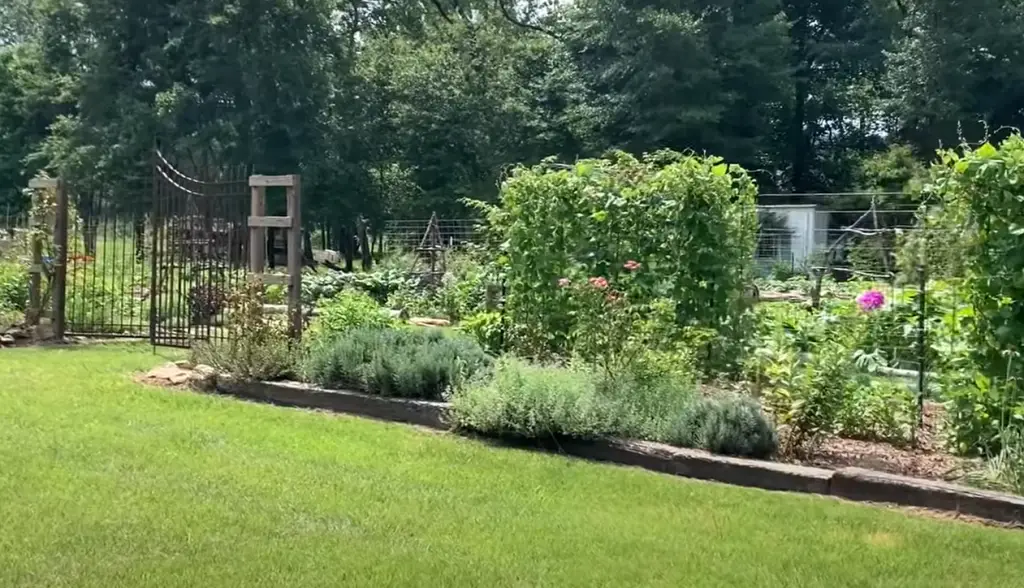
Another great way to enclose your potager garden is by planting climbing plants such as vines or roses. These plants will not only add some extra beauty to your garden, but they will also help to create a natural barrier that will keep unwanted visitors out.
Finally, you may also want to consider adding a gate or door to your potager garden. This will not only give you easy access to your garden, but it will also help to keep animals and children from wandering in. [2],[5]
Consider the shape of your garden
The shape of your garden will have a big impact on its overall look and feel.
If you have a smaller space, you may want to go for a more intimate circular design.Once you have decided on the shape of your garden, it is time to start planning what you would like to grow. You may already have some plants in mind, or you may need some inspiration. Either way, there are a few things to keep in mind when selecting plants for your potager garden.
First, consider the height of the plants you would like to grow. Taller plants, such as tomatoes or corn, will require more space than shorter plants, such as carrots or lettuce.
Second, think about the plant colors. A potager garden is a great opportunity to add some color to your yard. Brightly colored flowers, such as zinnias or cosmos, can add a touch of whimsy to your garden.
Finally, consider the texture of your plants. A variety of textures can add interest and depth to your potager garden. For example, you might want to include both leafy greens and fluffy herbs in your garden.
Once you have an idea of what you would like to grow, it is time to start planting! Be sure to give each plant enough space to grow and don’t forget to water them regularly. [2],[3],[4],[5]
Make sure the garden fits your surroundings
One thing you definitely need to do is make sure the garden fits your surroundings. You don’t want it to be too big or too small. It should also be located in an area that gets at least six hours of sunlight per day. You will want to choose a layout that is both functional and aesthetically pleasing. There are many different potager garden designs to choose from, so take your time and find one that suits your needs.
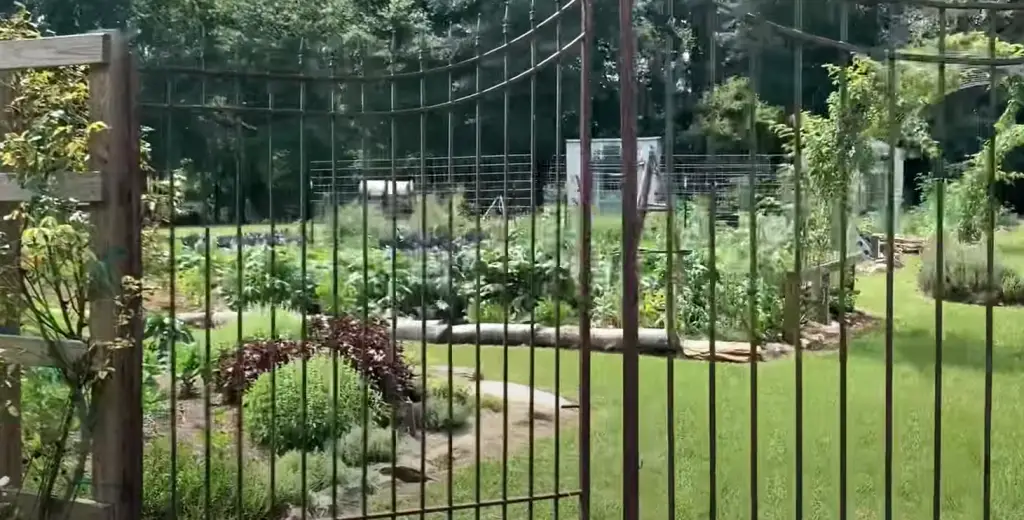
We suggest planning your garden location close to the back door, if possible. This will make it easier to get in and out, and you won’t have to walk through your beautiful garden to get to the house.
Once you have chosen the perfect location for your potager garden, it’s time to start planning the layout. There are many different ways to design a potager garden, so take some time to browse through some pictures and find a layout that you like.
The main limitation of potager gardens is that they require a lot of space. If you have a large yard, this may not be an issue. However, if you only have a small patio or balcony, you will need to be careful about how you use your space. Keep in mind that you will need to accommodate all of the plants that you want to grow, as well as any paths or seating areas that you want to include. [5]
Consider vertical accents
Because potager gardens are so small, it is important to make use of all the space available. One way to do this is to add vertical accents, such as trellises or obelisks. This will not only give your garden a more polished look, but it will also allow you to grow climbing plants, which can save valuable ground space.
Another way to add vertical interest to your potager garden is to plant in tiers. By planting taller plants in the back and shorter plants in the front, you can create depth and dimension in your garden. This technique is especially effective when combined with other design elements, such as color or texture. [3],[4]
Plant different plants of different colors
As you may know by now, aesthetic appeal is an important part of potager gardens. One way to ensure your garden looks its best is by planting different plants of different colors. This will create a visually pleasing effect that is sure to impress your guests.
Consider both purely decorative plants, as well as those that will produce edible fruits and vegetables. A mix of both is ideal, as it will make your garden more versatile.
There are a few other things to keep in mind when choosing plants for your potager garden. For example, you will want to choose plants that are resistant to pests and disease.
Once you have decided on the plants you would like to include in your garden, it is time to start planning out where they will go. This can be tricky, as you will need to take into account the amount of sunlight each plant needs in order to thrive. You also don’t want your plants to overcrowd one another.
Of course you can incorporate companion planting into your potager garden as well. This is when you plant two or more different plants next to each other in order to achieve a desired effect. For example, planting basil next to tomatoes will help to repel pests.
Watering and fertilizing are two of the most important aspects of gardening, and this is especially true for potager gardens.
Additionally, you should fertilize your plants every few weeks with an all-purpose fertilizer.Grow plants in raised beds
Raised beds are a great way to grow plants in a potager garden. By putting some extra effort, you can achieve a plentiful amount of advantages. First, raised garden beds make it easier to reach all of the plants without having to stoop down. This can be a great benefit for people who have back problems or other limitations that make bending over difficult.
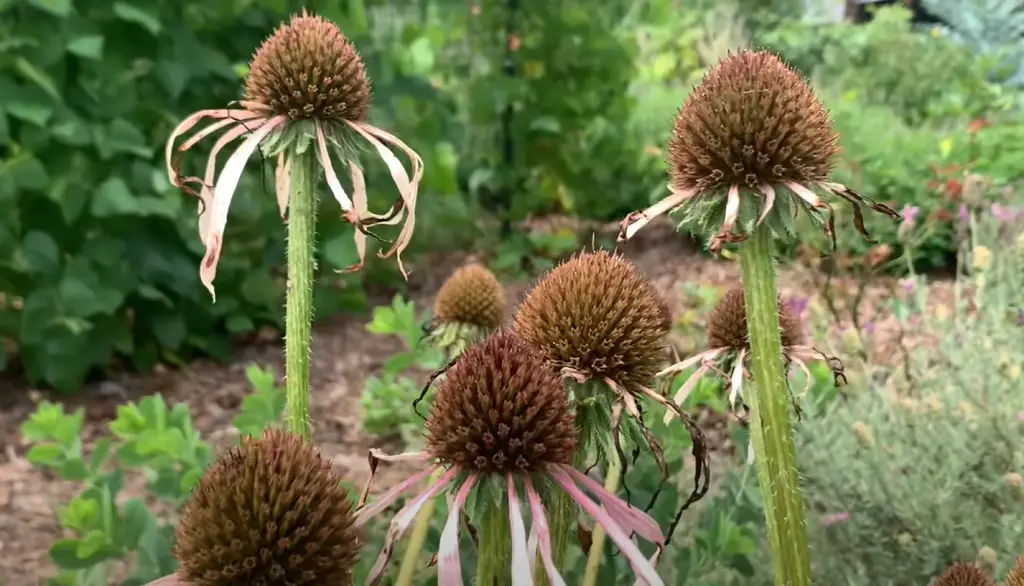
Second, raised beds help to improve drainage. This is especially important in areas that receive a lot of rain or have clay soil. Proper drainage is essential for healthy plants, and raised beds can help to ensure that your plants get the drainage they need.
Third, raised beds can also help to keep weeds at bay. Weeds can compete with your plants for water and nutrients, so it’s important to keep them under control. Raised beds can help to limit the spread of weeds by making it more difficult for them to take root.
If you decide to use raised beds, be sure to choose a material that will last. Wood is a good option, but it will need to be treated to withstand the elements. Stone or concrete are also options, but they can be more expensive.
You can find raised beds at most home improvement stores, or you can build your own. If you decide to build your own, be sure to use rot-resistant lumber and seal all the joints with silicone caulk. [2],[4]
Create a focal point
Since potager gardens are typically small, it’s important to create a focal point. This will help to draw the eye and add visual interest to your garden. A common way to create a focal point is to use an espaliered fruit tree or an ornamental vegetable plant.
Another option is to create a living wall by planting vegetables or herbs in vertically-stacked planters. You can also use trellises or obelisks to support climbing plants such as beans, cucumbers, or peas.
Or, you can create a relaxing seating area where you can enjoy the fruits (and vegetables!) of your labor. [1]
Add a nice looking patch
No matter how small your potager garden is, you should always include a nice patch for walking and relaxing. This can be a simple stone path or a more elaborate brick patio.
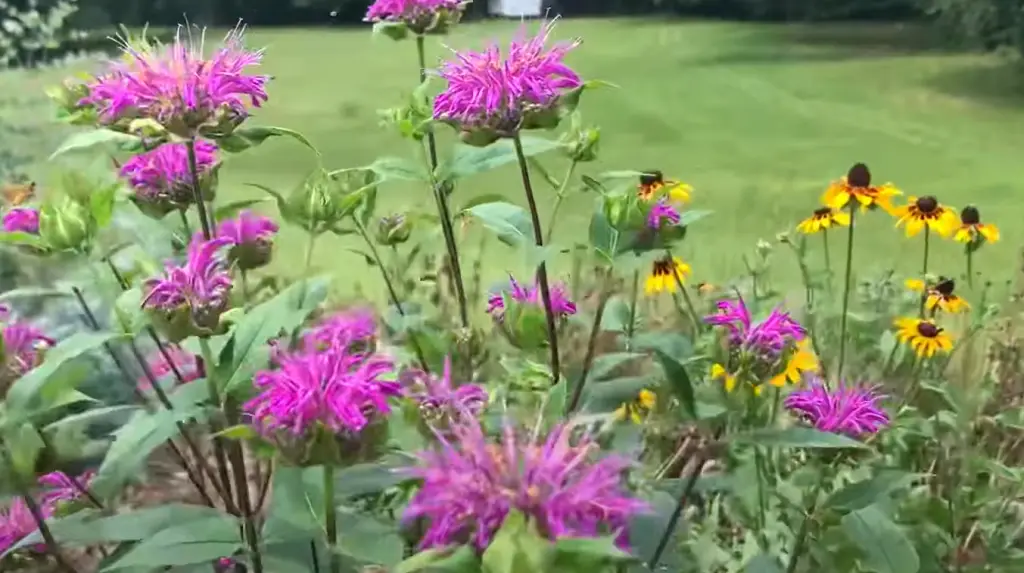
Whatever you choose, be sure to leave enough space for comfortable walking and furniture placement. You may even want to include a small bench or table so that you can enjoy your garden even more. The best part about potager gardens is that they can be as simple or as elaborate as you like. [1],[13]
FAQ
What is the meaning of potager garden?
A potager is a French term for an ornamental vegetable or kitchen garden. The historical design principle was to integrate the function of providing fresh herbs, fruits, and vegetables for the home with ornamental features such as color and fragrance.
Today, potager gardens are still quite popular in France but can be found all over the world. They are often designed with raised beds or containers, which makes them ideal for small spaces. Plus, growing your own food is a great way to save money and eat healthy!
How do you make a potager garden?
There’s no one-size-fits-all answer to this question, as the best way to make a potager garden will vary depending on your individual circumstances. But generally, with potager gardens you want to prioritize both usefulness and aesthetics, so a good place to start is by planning out what vegetables, fruits, and herbs you want to grow, and then arranging them in a way that is both functional and visually pleasing.
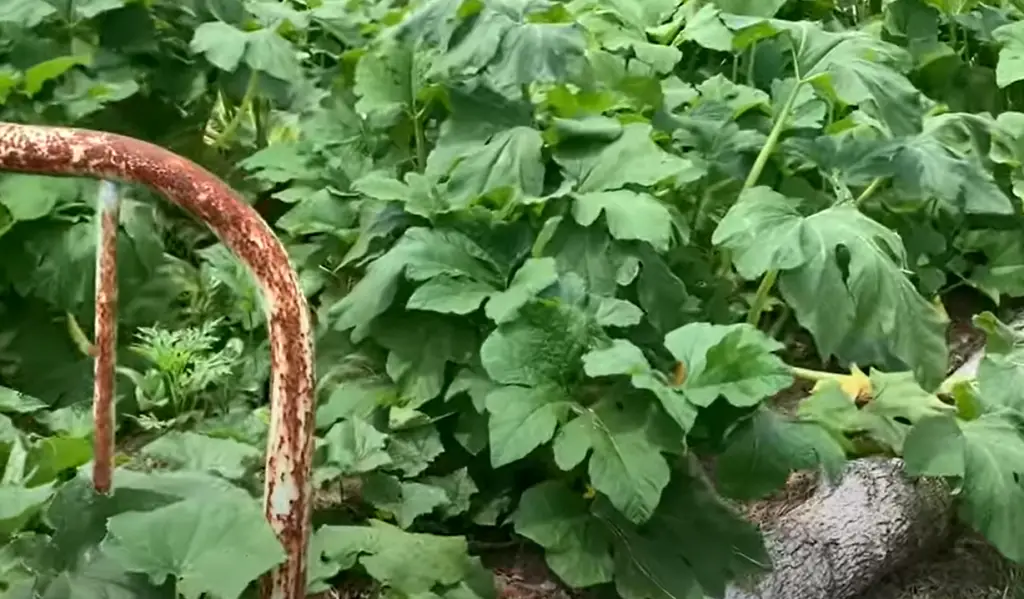
Another important factor to consider when making a potager garden is the layout – it’s often helpful to divide the space into quadrants or sections to make it more manageable. And finally, don’t forget about the all-important details like pathways, fences, trellises, and other ornamental elements that will make your potager garden truly unique.
What is a potager bed?
A potager bed is a kitchen garden that is typically built in rectangular or square shape. It usually has raised sides made of wood, stone, or brick. The potager bed is often used to grow herbs and vegetables.
Useful Video: What is a Potager Garden?
Conclusion
A potager garden is a type of kitchen garden that is both ornamental and productive. It is a great way to get the most out of your garden space, and it can be a beautiful addition to your home. By growing a variety of fruits, vegetables, and herbs, you can create a stunning landscape that will also provide you with fresh produce and herbs for your kitchen. If you are thinking about starting a potager garden, be sure to do your research and plan carefully. With a little bit of effort, you can have a beautiful and bountiful potager garden of your own. Thanks for reading! I hope this guide was helpful.
References:
- http://randysnursery.com/what-exactly-is-a-potager-anyway/
- https://thepotagerproject.com/potager-garden/
- https://www.gardeningknowhow.com/special/spaces/how-to-design-a-potager-garden.htm
- https://www.justdabblingalong.com/difference-between-kitchen-garden-regular-vegetable-garden/
- https://www.gardeningetc.com/advice/potager-garden
- https://www.growveg.com/guides/how-to-design-a-potager-garden/





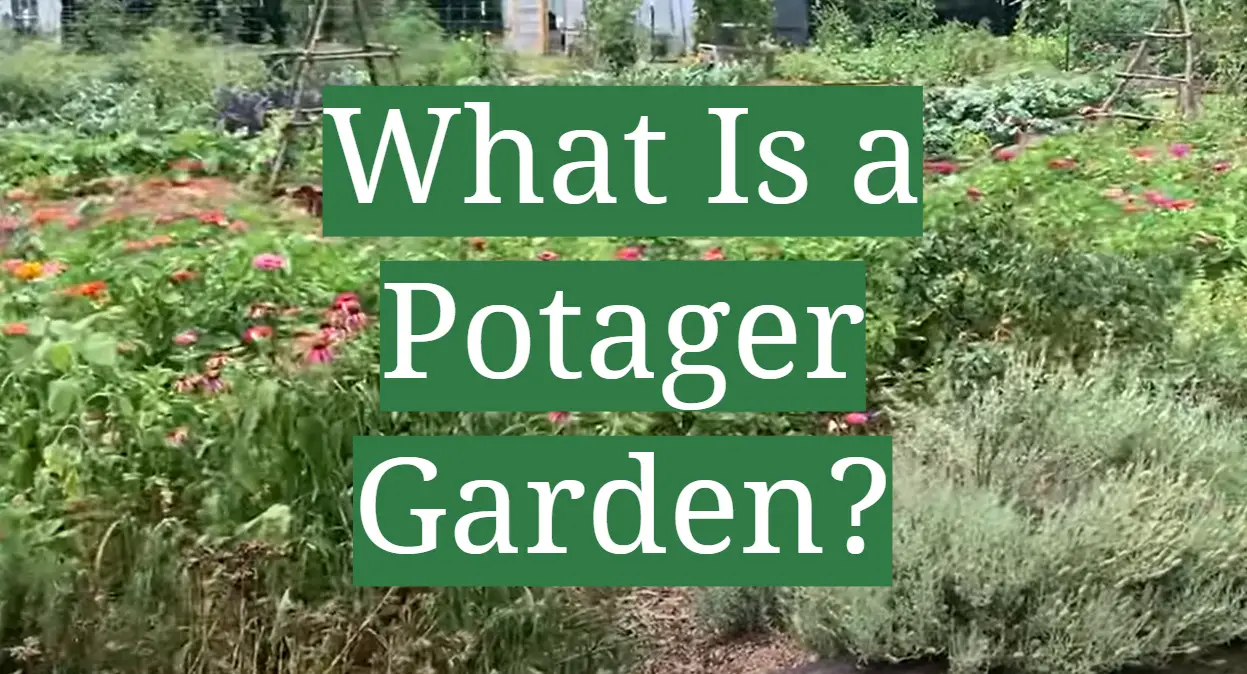




Leave a Reply
View Comments